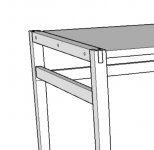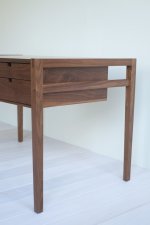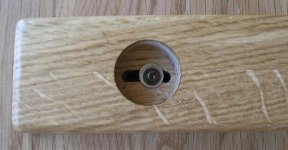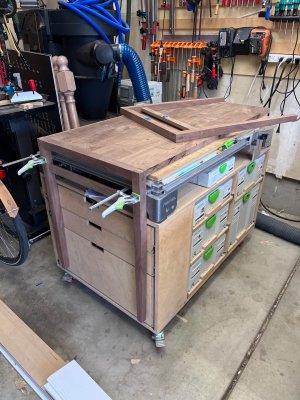Planning out a desk build and my wife wants me to build something similar to this.
I'm assuming the drawer box is screwed into the support rails on the right side and back, but wondering how to attach it to the top desk surface panel itself? Also, wondering how to attach the panel to the legs while allowing for movement? Maybe I'm overthinking this, but it would be a fairly simple build if not worried about the panel expanding/contracting so I could just domino everything together. (I could use walnut ply for the panel and eliminate the movement, but definitely would prefer to use solid hardwood...and it appears the maker of this used solid too)
Thanks for any suggestions.
Cheers,
Matt
[attachimg=1]
I'm assuming the drawer box is screwed into the support rails on the right side and back, but wondering how to attach it to the top desk surface panel itself? Also, wondering how to attach the panel to the legs while allowing for movement? Maybe I'm overthinking this, but it would be a fairly simple build if not worried about the panel expanding/contracting so I could just domino everything together. (I could use walnut ply for the panel and eliminate the movement, but definitely would prefer to use solid hardwood...and it appears the maker of this used solid too)
Thanks for any suggestions.
Cheers,
Matt
[attachimg=1]






